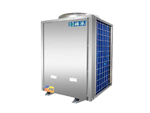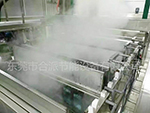1. Water heater installation location:
First choice: In the enclosed balcony, the enclosed balcony is a semi-open space that can be controlled independently; the water heater can be installed in this position as an air conditioner in summer
Use (suitable for lunch break), in winter, a new fan replaces the air, which is an excellent installation location. Customers who have a strong desire in the Northeast must install in this location.
Second choice 1: Outdoor terraces. The terraces in front of and behind large houses are also very suitable for installing air energy, which is convenient and safe.
Second choice 2: Air-conditioning unit. Generally houses have air-conditioning units. A slight improvement on this position is also very suitable for installing air energy. If you encounter a narrower air-conditioning unit, you cannot install it.
Second choice 3: Small platforms outside the walls, beams and columns, where water heaters are installed, and some reinforcement may be needed.
Second choice 4: The roof platform, where the solar energy was originally installed, can be installed with air energy. Note that there must be hot and cold water pipes, and the power socket must have a waterproof box (you can request a gift when you buy the Nuanyangyang brand).
Second choice 5: bathroom, kitchen, if the bathroom or kitchen is relatively spacious, it can also be installed in these places, but you must pay attention to the layout of drainage facilities.
Final selection: wall-mounted installation, wall-mounted installation is dangerous, customers try not to choose, the reason is that they may fall when they encounter earthquakes and other vibrations; if the customer insists on wall-mounted installation,
Preferential: Close distance is preferred for kitchens with the same conditions. The hot water is used most frequently in the kitchen, followed by public toilets. The closer the distance is, the less cold water is. 50% of the hot water is used by the kitchen in the year of the water heater.
2. There are drainage facilities:
The installation of air-energy water heaters has condensed water discharged during use, so the installation location should have floor drains, water ditches and other drainage facilities.
3. Instrument installation position:
The instrument, that is, the control panel, needs to be installed nearby to avoid rain; because most of the operation mode chooses the "economy mode", the control panel is actually rarely operated, and there is no need to install it in a very conspicuous position. It can be installed on the balcony or the wall of the corridor. Install.
4. Water pipe layout:
The inlet and outlet pipes of air energy water heaters are preferably 25PPR pipes (commonly known as 6 pipes). Note that the screw thread of the water pipe is still 4 points; the air energy water heater is a central water heater, and the outlet pipe is actually a main pipe. The diameter should be larger, so as to avoid "hot and cold suddenly." "Phenomenon.
For customers who install the return water device, the diameter of the return pipe only needs to be 4 minutes.
5. Power socket:
The power socket is a three-pin plug with a wire diameter of 1.5 square meters (or more), preferably with a waterproof box.
6. Basic requirements for door-to-door installation:
6.1. The bulk machine must be installed on site, so you must carry a vacuum pump, a spirit level, a copper pipe expansion interface tool, especially a vacuum pump, which is the key equipment.
6.2. The coil and connecting pipe must be evacuated, and the vacuum degree should reach 550 mmHg and above; if refrigerant is used to drive the air inside the copper pipe, it will inevitably reduce the amount of refrigerant (the refrigerant is very expensive and manufacturers will not add more) and affect the heating efficiency , It will also pollute the environment.
6.3, the level deviation of the host should be less than 5mm
7. Test program:
7.1. Connect the cold water pipe first, and the cold water pipe is connected to the water inlet at the position of the safety valve (the cold water pipe interface should be installed with an overhaul valve);
7.2. Filling the water tank and filling the water tank is the most important link (filling must be completed before the hot water pipe is connected). After the hot water outlet has water flowing out (indicating that the water tank has been filled with water), close the valve and stop filling;
7.3. Connect the hot water pipe and open the water inlet valve;
7.4. Plug in the power cord and start running
7.5. Check the water pipe wires, listen to the sound, check the fan, observe the instrument, and run for 10 minutes without abnormality, and then the test machine will be completed.
8. Do not move the water temperature probe at will:
The water temperature probe must not be separated from the blind pipe for detecting the temperature of the water tank, so as to avoid overheating of the heater of the unit and damage to the unit.
9. The hot water temperature should be appropriate:
When the hot water temperature is above 50 degrees, it must be mixed with hot and cold water to avoid scalding.
10. Selection of fuse:
Don't use copper wire or iron wire instead, it may cause malfunction or cause fire.
11. Confirm the use power of electrical equipment:
The main power supply must meet the power requirements of the heat pump water heater, and the electricity consumption must meet the national civil/commercial use requirements. Otherwise, the unit will be damaged by over-voltage and under-voltage operation, and even cause fire.
12. Leakage protection switch:
The customer should install a leakage protection switch with equal power and good grounding performance.
 中文版
中文版


 about us
about us company culture
company culture Qualification
Qualification Company reality
Company reality Air energy water heater
Air energy water heater Swimming pool constant temperature hot water unit
Swimming pool constant temperature hot water unit Ultra-low temperature hot water unit
Ultra-low temperature hot water unit Air energy hot water project
Air energy hot water project Industrial high temperature hot water project
Industrial high temperature hot water project Air energy heating project
Air energy heating project Media to Electricity Project
Media to Electricity Project pre-sale service
pre-sale service After-sales service
After-sales service Service Center
Service Center feedback
feedback





